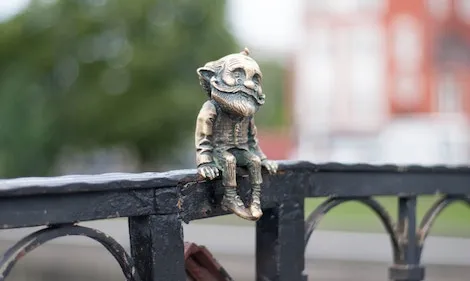
What Is Low Fantasy? Your Guide To The Subgenre
This content contains affiliate links. When you buy through these links, we may earn an affiliate commission.
You’re walking along minding your own business and you run smack dab into an elf. Or you’re fiddling with your hair in the mirror and you discover that you can slow time to suit your getting ready needs. Or you’re doing your taxes and suddenly your computer camera blinks on and a troll from another realm squeezes through its impossibly tiny hole and plops down to discuss write-offs with you (trolls being notoriously brilliant at accounting). Or you’re wandering through the local woods and happen upon a unicorn in distress—get him an In-and-Out burger, stat, or he’ll never be able to fly home.
It could happen. Or, at least: these scenarios feel a little more like they could happen than, say, the Narnia books, or Anne McCaffery’s adventures in Pern. These are fantasy set-ups with one very important connective quality: they begin (and remain) in the world that we know.
Such is the realm of low fantasy, which can distinguished from fantasy books of old (or epic or high fantasy) by the fact that their magical elements are intrusive in the known world, rather than indicative of a whole other imagined world. They don’t fuss with magical portals or pull an “everything you know is a lie”; rather, they infuse the ordinary with ephemera.

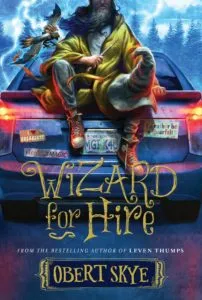 Ozzy, the child of scientists, is left alone in his secluded wooded home when his parents are kidnapped. They’d discovered a formula that could give powerful people significant control; as they’re pressed to give it up, Ozzy grows. And grows. Into a teenager who must rejoin the world, but who is able to do so with the help of a mechanical bird and an oddball adult helper who insists he’s a magician. Skye’s novel toys with what’s real and demands emotional responses.
Ozzy, the child of scientists, is left alone in his secluded wooded home when his parents are kidnapped. They’d discovered a formula that could give powerful people significant control; as they’re pressed to give it up, Ozzy grows. And grows. Into a teenager who must rejoin the world, but who is able to do so with the help of a mechanical bird and an oddball adult helper who insists he’s a magician. Skye’s novel toys with what’s real and demands emotional responses.
 Straddling science fiction and low fantasy, this book contains an alien—but it’s mostly about three children learning to survive the gifts that were bestowed upon them by their otherworldy visitor. Luz (the light of the title) changed the way Hank’s hands work, the way that Ana sees the world, and the way that Milo hears. In his absence, their senses are minefields, not sources of sanctuary. They navigate everyday challenges with the addition of these impediments-slash-“gifts,” and the result is a coming-of-age story unlike any you’ve read before.
Straddling science fiction and low fantasy, this book contains an alien—but it’s mostly about three children learning to survive the gifts that were bestowed upon them by their otherworldy visitor. Luz (the light of the title) changed the way Hank’s hands work, the way that Ana sees the world, and the way that Milo hears. In his absence, their senses are minefields, not sources of sanctuary. They navigate everyday challenges with the addition of these impediments-slash-“gifts,” and the result is a coming-of-age story unlike any you’ve read before.
 The setting for McKinlay’s novel is an isolated and matriarchal island community that has forbidden talk of the world before. They rely on mica for their power; it can only be sourced from inside the mountain, and only young girls are small enough to fit between the crags. Harvesting is dangerous but lauded work, and Jena is the leader on her line. But she’s about to discover that there’s more to her community’s myths and absolutes than she’s been taught, and the transgressions she’s tempted toward will change everything.
The setting for McKinlay’s novel is an isolated and matriarchal island community that has forbidden talk of the world before. They rely on mica for their power; it can only be sourced from inside the mountain, and only young girls are small enough to fit between the crags. Harvesting is dangerous but lauded work, and Jena is the leader on her line. But she’s about to discover that there’s more to her community’s myths and absolutes than she’s been taught, and the transgressions she’s tempted toward will change everything.
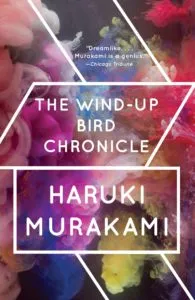 A missing cat sets the ball rolling in Murakami’s masterpiece, leading to a clairvoyant and a message from the past. The cat’s owner goes missing, ruminates at the bottom of a well, and then is returned to a world that seems transformed, where eerie connections exist just beyond recognition. Minor quests and missed connections are also part of this mysterious tale.
A missing cat sets the ball rolling in Murakami’s masterpiece, leading to a clairvoyant and a message from the past. The cat’s owner goes missing, ruminates at the bottom of a well, and then is returned to a world that seems transformed, where eerie connections exist just beyond recognition. Minor quests and missed connections are also part of this mysterious tale.
 The child of a djinni is kidnapped and secreted at the bottom of a hole where he’s less of a threat to a centuries-old plan to remake the world. This is our world, but from a Bangladeshi perspective that you haven’t learned to consider—the ancient powers that be don’t want you seeing everything. There are dragons, seabeasts, villains, and undecideds; there are ordinary college students who are drawn into something more. Hossain’s novel is a wonder.
The child of a djinni is kidnapped and secreted at the bottom of a hole where he’s less of a threat to a centuries-old plan to remake the world. This is our world, but from a Bangladeshi perspective that you haven’t learned to consider—the ancient powers that be don’t want you seeing everything. There are dragons, seabeasts, villains, and undecideds; there are ordinary college students who are drawn into something more. Hossain’s novel is a wonder.
 For the briefest moment in her childhood, Patricia can talk to animals. But as she grows up, a magical incident in the woods comes to seem more and more like a dream than an actual extraordinary moment. When she encounters a boy who can travel through time by instants, she is encouraged…and soon sent to a school for magical misfits. Add in nods to climate change and planetary distress, and you have a truly unique (and also familiar), fantastic text.
For the briefest moment in her childhood, Patricia can talk to animals. But as she grows up, a magical incident in the woods comes to seem more and more like a dream than an actual extraordinary moment. When she encounters a boy who can travel through time by instants, she is encouraged…and soon sent to a school for magical misfits. Add in nods to climate change and planetary distress, and you have a truly unique (and also familiar), fantastic text.
 A foundational text when it comes to modern urban fantasies, this title begins with a recognizable premise: a young rock-and-roller loses her boyfriend, her band, and some of her moxie in quick succession. Things get weirder on a walk home through the city when she encounters faeries. Their factions are at war, and she’s drawn in to the conflict.
A foundational text when it comes to modern urban fantasies, this title begins with a recognizable premise: a young rock-and-roller loses her boyfriend, her band, and some of her moxie in quick succession. Things get weirder on a walk home through the city when she encounters faeries. Their factions are at war, and she’s drawn in to the conflict.
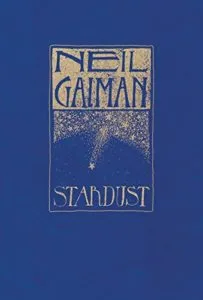 A young man in unrequited love with the village beauty, willing to do anything he is able to win her heart: what could be more familiar? Well, throw in a fallen star who’s more than a little talkative and you’ve suddenly entered fresh territory. A stone wall around Tristan’s town is the threshold that must be crossed to discover the something-more in Neil Gaiman’s story, and it’s an intrusion that’s well worth the effort.
A young man in unrequited love with the village beauty, willing to do anything he is able to win her heart: what could be more familiar? Well, throw in a fallen star who’s more than a little talkative and you’ve suddenly entered fresh territory. A stone wall around Tristan’s town is the threshold that must be crossed to discover the something-more in Neil Gaiman’s story, and it’s an intrusion that’s well worth the effort.
 This modern, New England-situated take on Snow White deals with racism, desire, and disappointment. Boy is the wicked stepmother character; she leaves New York in search of more, and ends up the stepmother of Snow. When her own child reveals dangerous truths about her new family, it forces reckonings with concepts as significant as beauty, family, and love.
This modern, New England-situated take on Snow White deals with racism, desire, and disappointment. Boy is the wicked stepmother character; she leaves New York in search of more, and ends up the stepmother of Snow. When her own child reveals dangerous truths about her new family, it forces reckonings with concepts as significant as beauty, family, and love.
In a seaside town there once lived a boy, his loving mother, and his shipbuilding father. They planned to construct their own vessel and travel around the world. But the sea is unpredictable, and it subsumed their dreams. Now faced with forced removal from their clifftop home, Mr. and Mrs. Grapes wait to lose what’s left of their son’s memory. Once again, nature intervenes, pushing their home into the waves. It becomes the vessel that will carry them somewhere new. Surreal and surprising, Reina’s book fits between the known and unknowable.
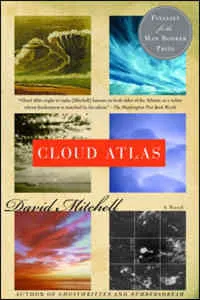 From a slave ship into the future, successive generations of human beings discover indelible connections to people past. A composer, a notary, a revolutionary, a man just eking by; they discover each other in musical notes, in stories, and myths, and help each other along as humanity’s destiny shifts from toward-the-new-world to toward-new-stars. Mitchell is a master of the weird and challenging.
From a slave ship into the future, successive generations of human beings discover indelible connections to people past. A composer, a notary, a revolutionary, a man just eking by; they discover each other in musical notes, in stories, and myths, and help each other along as humanity’s destiny shifts from toward-the-new-world to toward-new-stars. Mitchell is a master of the weird and challenging.
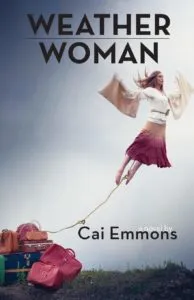 Bronwyn’s early life was not easy, but she always found refuge in considering the sky. This fascination with the undulations of weather systems and clouds led her to higher education at MIT, where she studied atmospheric science—until her more blue blood colleagues chased her out. As a meteorologist in New Hampshire who’s constantly disappointed with herself, she really does not expect a second act. And then she changes the weather. And in changing the weather once, discovers that she can do it again, with more and more specificity. Bronwyn sets her sights on combating climate change in this continually surprising tale.
Bronwyn’s early life was not easy, but she always found refuge in considering the sky. This fascination with the undulations of weather systems and clouds led her to higher education at MIT, where she studied atmospheric science—until her more blue blood colleagues chased her out. As a meteorologist in New Hampshire who’s constantly disappointed with herself, she really does not expect a second act. And then she changes the weather. And in changing the weather once, discovers that she can do it again, with more and more specificity. Bronwyn sets her sights on combating climate change in this continually surprising tale.
 This novel is about marriage, love, and trust. But it’s also not, because tied into all of that are women with wings, who are able to leave heaven at will if they fall in love with human men, but whose happiness is reliant on being granted their lover’s faith in return. Playing on Filipino folk tales, Rutledge’s novel plies reality and magic for something central to both, and winds up somewhere both lovely and heartbreaking in the process.
This novel is about marriage, love, and trust. But it’s also not, because tied into all of that are women with wings, who are able to leave heaven at will if they fall in love with human men, but whose happiness is reliant on being granted their lover’s faith in return. Playing on Filipino folk tales, Rutledge’s novel plies reality and magic for something central to both, and winds up somewhere both lovely and heartbreaking in the process.
 Jodorowsky’s book is his family biography. And it’s not. It’s about a plot to kill a dictator. But it’s also not. Here, the heiresses of mining fortunes have the options to sacrifice themselves for the greater good, and social transgressors confined to the bottom of the sea still have secrets to proffer, if you’re brave enough to face them. Jodorowsky has a gift for turning truth inside out and revealing its hallucinogenic guts, and that is nowhere more true than in this deeply personal tale.
Jodorowsky’s book is his family biography. And it’s not. It’s about a plot to kill a dictator. But it’s also not. Here, the heiresses of mining fortunes have the options to sacrifice themselves for the greater good, and social transgressors confined to the bottom of the sea still have secrets to proffer, if you’re brave enough to face them. Jodorowsky has a gift for turning truth inside out and revealing its hallucinogenic guts, and that is nowhere more true than in this deeply personal tale.

What is Low Fantasy?
Low fantasy titles don’t have to world build as extensively as high fantasy titles. They don’t construct an Oz or a Wonderland, but rather start by tweaking what’s already here. Their settings are more middle suburbia than Middle Earth. They traipse alongside us, they cuddle up to what’s familiar, and they add a dash of the magical to the equation for good measure. You’ve probably read one or more of such books without realizing it. If you grew up with stories of animated toys or animals that talk: they’re a low fantasy staple. If the characters you loved could jump higher than ordinary kids, or manipulate reality in subtle ways: that’s low fantasy. If the books you favor tweak humdrum days to make them less so: you’ve been here all along. (Note also that there’s some disagreement about what fits where. A book that one person regards as magical realism might be regarded by others as high fantasy; some might claim that portal fantasies are a crossover type. I presumed that American Gods would be a stellar example of low fantasy; lo and behold, I encountered it on a high fantasy list. Science fiction titles sometimes cross over onto low fantasy lists as well. The borders are permeable, and: two readers, three opinions.) If you’re looking for a place to start with low fantasy, you might try these extraordinary options:YA Low Fantasy Options
Wizard for Hire by Obert Skye
 Ozzy, the child of scientists, is left alone in his secluded wooded home when his parents are kidnapped. They’d discovered a formula that could give powerful people significant control; as they’re pressed to give it up, Ozzy grows. And grows. Into a teenager who must rejoin the world, but who is able to do so with the help of a mechanical bird and an oddball adult helper who insists he’s a magician. Skye’s novel toys with what’s real and demands emotional responses.
Ozzy, the child of scientists, is left alone in his secluded wooded home when his parents are kidnapped. They’d discovered a formula that could give powerful people significant control; as they’re pressed to give it up, Ozzy grows. And grows. Into a teenager who must rejoin the world, but who is able to do so with the help of a mechanical bird and an oddball adult helper who insists he’s a magician. Skye’s novel toys with what’s real and demands emotional responses.
When Light Left Us by Leah Thomas
 Straddling science fiction and low fantasy, this book contains an alien—but it’s mostly about three children learning to survive the gifts that were bestowed upon them by their otherworldy visitor. Luz (the light of the title) changed the way Hank’s hands work, the way that Ana sees the world, and the way that Milo hears. In his absence, their senses are minefields, not sources of sanctuary. They navigate everyday challenges with the addition of these impediments-slash-“gifts,” and the result is a coming-of-age story unlike any you’ve read before.
Straddling science fiction and low fantasy, this book contains an alien—but it’s mostly about three children learning to survive the gifts that were bestowed upon them by their otherworldy visitor. Luz (the light of the title) changed the way Hank’s hands work, the way that Ana sees the world, and the way that Milo hears. In his absence, their senses are minefields, not sources of sanctuary. They navigate everyday challenges with the addition of these impediments-slash-“gifts,” and the result is a coming-of-age story unlike any you’ve read before.
A Single Stone by Meg McKinlay
 The setting for McKinlay’s novel is an isolated and matriarchal island community that has forbidden talk of the world before. They rely on mica for their power; it can only be sourced from inside the mountain, and only young girls are small enough to fit between the crags. Harvesting is dangerous but lauded work, and Jena is the leader on her line. But she’s about to discover that there’s more to her community’s myths and absolutes than she’s been taught, and the transgressions she’s tempted toward will change everything.
The setting for McKinlay’s novel is an isolated and matriarchal island community that has forbidden talk of the world before. They rely on mica for their power; it can only be sourced from inside the mountain, and only young girls are small enough to fit between the crags. Harvesting is dangerous but lauded work, and Jena is the leader on her line. But she’s about to discover that there’s more to her community’s myths and absolutes than she’s been taught, and the transgressions she’s tempted toward will change everything.
Adult Low Fantasy BookS
The Wind-Up Bird Chronicle by Haruki Murakami
 A missing cat sets the ball rolling in Murakami’s masterpiece, leading to a clairvoyant and a message from the past. The cat’s owner goes missing, ruminates at the bottom of a well, and then is returned to a world that seems transformed, where eerie connections exist just beyond recognition. Minor quests and missed connections are also part of this mysterious tale.
A missing cat sets the ball rolling in Murakami’s masterpiece, leading to a clairvoyant and a message from the past. The cat’s owner goes missing, ruminates at the bottom of a well, and then is returned to a world that seems transformed, where eerie connections exist just beyond recognition. Minor quests and missed connections are also part of this mysterious tale.
Djinn City by Saad Z. Hossain
 The child of a djinni is kidnapped and secreted at the bottom of a hole where he’s less of a threat to a centuries-old plan to remake the world. This is our world, but from a Bangladeshi perspective that you haven’t learned to consider—the ancient powers that be don’t want you seeing everything. There are dragons, seabeasts, villains, and undecideds; there are ordinary college students who are drawn into something more. Hossain’s novel is a wonder.
The child of a djinni is kidnapped and secreted at the bottom of a hole where he’s less of a threat to a centuries-old plan to remake the world. This is our world, but from a Bangladeshi perspective that you haven’t learned to consider—the ancient powers that be don’t want you seeing everything. There are dragons, seabeasts, villains, and undecideds; there are ordinary college students who are drawn into something more. Hossain’s novel is a wonder.
All the Birds in the Sky by Charlie Jane Anders
 For the briefest moment in her childhood, Patricia can talk to animals. But as she grows up, a magical incident in the woods comes to seem more and more like a dream than an actual extraordinary moment. When she encounters a boy who can travel through time by instants, she is encouraged…and soon sent to a school for magical misfits. Add in nods to climate change and planetary distress, and you have a truly unique (and also familiar), fantastic text.
For the briefest moment in her childhood, Patricia can talk to animals. But as she grows up, a magical incident in the woods comes to seem more and more like a dream than an actual extraordinary moment. When she encounters a boy who can travel through time by instants, she is encouraged…and soon sent to a school for magical misfits. Add in nods to climate change and planetary distress, and you have a truly unique (and also familiar), fantastic text.
War for the Oaks by Emma Bull
 A foundational text when it comes to modern urban fantasies, this title begins with a recognizable premise: a young rock-and-roller loses her boyfriend, her band, and some of her moxie in quick succession. Things get weirder on a walk home through the city when she encounters faeries. Their factions are at war, and she’s drawn in to the conflict.
A foundational text when it comes to modern urban fantasies, this title begins with a recognizable premise: a young rock-and-roller loses her boyfriend, her band, and some of her moxie in quick succession. Things get weirder on a walk home through the city when she encounters faeries. Their factions are at war, and she’s drawn in to the conflict.
Stardust by Neil Gaiman
 A young man in unrequited love with the village beauty, willing to do anything he is able to win her heart: what could be more familiar? Well, throw in a fallen star who’s more than a little talkative and you’ve suddenly entered fresh territory. A stone wall around Tristan’s town is the threshold that must be crossed to discover the something-more in Neil Gaiman’s story, and it’s an intrusion that’s well worth the effort.
A young man in unrequited love with the village beauty, willing to do anything he is able to win her heart: what could be more familiar? Well, throw in a fallen star who’s more than a little talkative and you’ve suddenly entered fresh territory. A stone wall around Tristan’s town is the threshold that must be crossed to discover the something-more in Neil Gaiman’s story, and it’s an intrusion that’s well worth the effort.
Boy, Snow, Bird by Helen Oyeyemi
 This modern, New England-situated take on Snow White deals with racism, desire, and disappointment. Boy is the wicked stepmother character; she leaves New York in search of more, and ends up the stepmother of Snow. When her own child reveals dangerous truths about her new family, it forces reckonings with concepts as significant as beauty, family, and love.
This modern, New England-situated take on Snow White deals with racism, desire, and disappointment. Boy is the wicked stepmother character; she leaves New York in search of more, and ends up the stepmother of Snow. When her own child reveals dangerous truths about her new family, it forces reckonings with concepts as significant as beauty, family, and love.
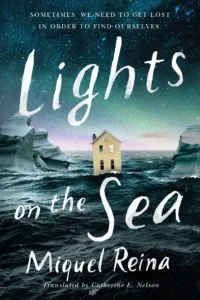 Lights on the Sea by Miquel Reina
Lights on the Sea by Miquel Reina
In a seaside town there once lived a boy, his loving mother, and his shipbuilding father. They planned to construct their own vessel and travel around the world. But the sea is unpredictable, and it subsumed their dreams. Now faced with forced removal from their clifftop home, Mr. and Mrs. Grapes wait to lose what’s left of their son’s memory. Once again, nature intervenes, pushing their home into the waves. It becomes the vessel that will carry them somewhere new. Surreal and surprising, Reina’s book fits between the known and unknowable.
Cloud Atlas by David Mitchell
 From a slave ship into the future, successive generations of human beings discover indelible connections to people past. A composer, a notary, a revolutionary, a man just eking by; they discover each other in musical notes, in stories, and myths, and help each other along as humanity’s destiny shifts from toward-the-new-world to toward-new-stars. Mitchell is a master of the weird and challenging.
From a slave ship into the future, successive generations of human beings discover indelible connections to people past. A composer, a notary, a revolutionary, a man just eking by; they discover each other in musical notes, in stories, and myths, and help each other along as humanity’s destiny shifts from toward-the-new-world to toward-new-stars. Mitchell is a master of the weird and challenging.
Weather Woman by Cai Emmons
 Bronwyn’s early life was not easy, but she always found refuge in considering the sky. This fascination with the undulations of weather systems and clouds led her to higher education at MIT, where she studied atmospheric science—until her more blue blood colleagues chased her out. As a meteorologist in New Hampshire who’s constantly disappointed with herself, she really does not expect a second act. And then she changes the weather. And in changing the weather once, discovers that she can do it again, with more and more specificity. Bronwyn sets her sights on combating climate change in this continually surprising tale.
Bronwyn’s early life was not easy, but she always found refuge in considering the sky. This fascination with the undulations of weather systems and clouds led her to higher education at MIT, where she studied atmospheric science—until her more blue blood colleagues chased her out. As a meteorologist in New Hampshire who’s constantly disappointed with herself, she really does not expect a second act. And then she changes the weather. And in changing the weather once, discovers that she can do it again, with more and more specificity. Bronwyn sets her sights on combating climate change in this continually surprising tale.
The Hour of Daydreams by Renee Macalino Rutledge
 This novel is about marriage, love, and trust. But it’s also not, because tied into all of that are women with wings, who are able to leave heaven at will if they fall in love with human men, but whose happiness is reliant on being granted their lover’s faith in return. Playing on Filipino folk tales, Rutledge’s novel plies reality and magic for something central to both, and winds up somewhere both lovely and heartbreaking in the process.
This novel is about marriage, love, and trust. But it’s also not, because tied into all of that are women with wings, who are able to leave heaven at will if they fall in love with human men, but whose happiness is reliant on being granted their lover’s faith in return. Playing on Filipino folk tales, Rutledge’s novel plies reality and magic for something central to both, and winds up somewhere both lovely and heartbreaking in the process.
The Son of Black Thursday by Alejandro Jodorowsky
 Jodorowsky’s book is his family biography. And it’s not. It’s about a plot to kill a dictator. But it’s also not. Here, the heiresses of mining fortunes have the options to sacrifice themselves for the greater good, and social transgressors confined to the bottom of the sea still have secrets to proffer, if you’re brave enough to face them. Jodorowsky has a gift for turning truth inside out and revealing its hallucinogenic guts, and that is nowhere more true than in this deeply personal tale.
Jodorowsky’s book is his family biography. And it’s not. It’s about a plot to kill a dictator. But it’s also not. Here, the heiresses of mining fortunes have the options to sacrifice themselves for the greater good, and social transgressors confined to the bottom of the sea still have secrets to proffer, if you’re brave enough to face them. Jodorowsky has a gift for turning truth inside out and revealing its hallucinogenic guts, and that is nowhere more true than in this deeply personal tale.





